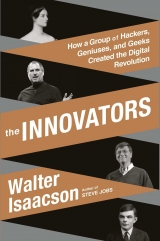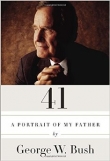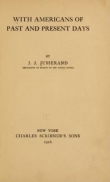
Текст книги "The Innovators: How a Group of Inventors, Hackers, Geniuses, and Geeks Created the Digital Revolution"
Автор книги: Walter Isaacson
Жанр:
Биографии и мемуары
сообщить о нарушении
Текущая страница: 11 (всего у книги 42 страниц)
Shockley had an idea for finding a solid-state replacement for a vacuum tube by putting a grid into a layer of copper oxide. Brattain was skeptical. He laughed and told Shockley that he had tried that approach before, and it never ended up producing an amplifier. But Shockley kept pushing. “It’s so damned important,” Brattain finally said, “that if you’ll tell me how you want it made, we’ll try it.”9 But as Brattain predicted, it didn’t work.
Before Shockley and Brattain could figure out why it had failed, World War II intervened. Shockley went off to become a research director in the Navy’s antisubmarine group, where he developed analyses of bomb detonation depths to improve attacks on German U-boats. He later traveled to Europe and Asia to help B-29 bomber fleets use radar. Brattain likewise left for Washington to work on submarine-detection technologies for the Navy, focusing on airborne magnetic devices.
THE SOLID-STATE TEAM
While Shockley and Brattain were away, the war was transforming Bell Labs. It became part of the triangular relationship that was forged among the government, research universities, and private industry. As the historian Jon Gertner noted, “In the first few years after Pearl Harbor, Bell Labs took on nearly a thousand different projects for the military—everything from tank radio sets to communications systems for pilots wearing oxygen masks to enciphering machines for scrambling secret messages.”10 The staff doubled in size, to nine thousand.
Having outgrown its Manhattan headquarters, most of Bell Labs moved to two hundred rolling acres in Murray Hill, New Jersey. Mervin Kelly and his colleagues wanted their new home to feel like an academic campus, but without the segregation of various disciplines into different buildings. They knew that creativity came through chance encounters. “All buildings have been connected so as to avoid fixed geographical delineation between departments and to encourage free interchange and close contact among them,” an executive wrote.11 The corridors were extremely long, more than the length of two football fields, and designed to promote random meetings among people with different talents and specialties, a strategy that Steve Jobs replicated in designing Apple’s new headquarters seventy years later. Anyone walking around Bell Labs might be bombarded with random ideas, soaking them up like a solar cell. Claude Shannon, the eccentric information theorist, would sometimes ride a unicycle up and down the long red terrazzo corridors while juggling three balls and nodding at colleagues.III It was a wacky metaphor for the balls-in-the-air ferment in the halls.
In November 1941 Brattain had made his last journal entry, into his notebook #18194, before leaving Bell Labs in Manhattan for his wartime service. Almost four years later, he picked up that same notebook in his new lab in Murray Hill and began anew with the entry “The war is over.” Kelly assigned him and Shockley to a research group that was designed “to achieve a unified approach to the theoretical and experimental work of the solid state area.” Its mission was the same as they had before the war: to create a replacement for the vacuum tube using semiconductors.12
When Kelly sent around the list of who was going to be on the solid-state research group, Brattain marveled that it included no losers. “By golly! There isn’t an s.o.b. in the group,” he recalled saying, before pausing to worry, “Maybe I was the s.o.b. in the group.” As he later declared, “It was probably one of the greatest research teams ever pulled together.”13
Shockley was the primary theoretician, but given his duties as the team’s supervisor—he was on a different floor—they decided to bring in an additional theorist. They chose a soft-spoken expert in quantum theory, John Bardeen. A child genius who had skipped three grades in school, Bardeen had written his doctoral thesis under Eugene Wigner at Princeton and during his wartime service in the Naval Ordnance Laboratory discussed torpedo design with Einstein. He was one of the world’s greatest experts on using quantum theory to understand how materials conduct electricity, and he had, according to colleagues, a “genuine ability to collaborate easily with experimentalist and theorist alike.”14 There was initially no separate office for Bardeen, so he ensconced himself in Brattain’s lab space. It was a smart move that showed, once again, the creative energy generated by physical proximity. By sitting together, the theorist and the experimentalist could brainstorm ideas face-to-face, hour after hour.
Unlike Brattain, who was voluble and talkative, Bardeen was so quiet that he was dubbed “Whispering John.” To understand his mumbling, people had to lean forward, but they learned that it was worth it. He was also contemplative and cautious, unlike Shockley, who was lightning-quick and impulsively spouted theories and assertions.
Their insights came from interactions with each other. “The close collaboration between experimentalists and theorists extended through all stages of the research, from the conception of the experiment to the analysis of the results,” said Bardeen.15 Their impromptu meetings, usually led by Shockley, occurred almost every day, a quintessential display of finish-each-other’s-sentence creativity. “We would meet to discuss important steps almost on the spur of the moment,” Brattain said. “Many of us had ideas in these discussion groups, one person’s remarks suggesting an idea to another.”16
These meetings became known as “blackboard sessions” or “chalk talks” because Shockley would stand, chalk in hand, scribbling down ideas. Brattain, ever brash, would pace around the back of the room and shout out objections to some of Shockley’s suggestions, sometimes betting a dollar they wouldn’t work. Shockley didn’t like losing. “I finally found out he was annoyed when he paid me off once in ten dimes,” Brattain recalled.17 The interactions would spill over into their social outings; they often played golf together, went out for beer at a diner called Snuffy’s, and joined in bridge matches with their spouses.
THE TRANSISTOR
With his new team at Bell Labs, Shockley resurrected the theory he had been playing with five years earlier for a solid-state replacement for the vacuum tube. If a strong electrical field was placed right next to a slab of semiconducting material, he posited, the field would pull some electrons to the surface and permit a surge of current through the slab. This potentially would allow a semiconductor to use a very small signal to control a much larger signal. A very low-powered current could provide the input, and it could control (or switch on and off) a much higher-powered output current. Thus the semiconductor could be used as an amplifier or an on-off switch, just like a vacuum tube.
There was one small problem with this “field effect”: when Shockley tested the theory—his team charged a plate with a thousand volts and put it only a millimeter away from a semiconductor surface—it didn’t work. “No observable change in current,” he wrote in his lab notebook. It was, he later said, “quite mysterious.”
Figuring out why a theory failed can point the way to a better one, so Shockley asked Bardeen to come up with an explanation. The two of them spent hours discussing what are known as “surface states,” the electronic properties and quantum-mechanical description of the atom layers closest to the surface of materials. After five months, Bardeen had his insight. He went to the blackboard in the workspace he shared with Brattain and began to write.
Bardeen realized that when a semiconductor is charged, electrons become trapped on its surface. They cannot move about freely. They form a shield, and an electric field, even a strong one a millimeter away, cannot penetrate this barrier. “These added electrons were trapped, immobile, in surface states,” Shockley noted. “In effect, the surface states shielded the interior of the semiconductor from the influence of the positively charged control plate.”18
The team now had a new mission: find a way to break through the shield that formed on the surface of semiconductors. “We concentrated on new experiments related to Bardeen’s surface states,” Shockley explained. They would have to breach this barrier in order to goose the semiconductor into being able to regulate, switch, and amplify current.19
Progress was slow over the next year, but in November 1947 a series of breakthroughs led to what became known as the Miracle Month. Bardeen built on the theory of the “photovoltaic effect,” which says that shining light on two dissimilar materials that are in contact with one another will produce an electric voltage. That process, he surmised, might dislodge some of the electrons that created the shield. Brattain, working side by side with Bardeen, devised ingenious experiments to test out ways to do this.
After a while, serendipity proved to be their friend. Brattain conducted some of the experiments in a thermos so he could vary the temperature. But condensation on the silicon kept gunking up the measurements. The best way to solve that would be to put the entire apparatus in a vacuum, but that would have required a lot of work. “I’m essentially a lazy physicist,” Brattain admitted. “So I got the idea to immerse the system in a dielectric liquid.”20 He filled the thermos with water, which proved a simple way to avoid the condensation problem. He and Bardeen tried it out on November 17, and it worked beautifully.
That was a Monday. Throughout that week, they bounced through a series of theoretical and experimental ideas. By Friday, Bardeen had come up with a way to eliminate the need to immerse the apparatus in water. Instead, he suggested, they could just use a drop of water, or a little gel, right where a sharp metal point jabbed down into the piece of silicon. “Come on, John,” Brattain responded enthusiastically. “Let’s go make it.” One challenge was that the metal point couldn’t be allowed contact with the water drop, but Brattain was an improvisational wizard and solved that with a bit of sealing wax. He found a nice slab of silicon, put a tiny drop of water on it, coated a piece of wire with wax to insulate it, and jabbed the wire through the water drop and into the silicon. It worked. It was able to amplify a current, at least slightly. From this “point-contact” contraption the transistor was born.
Bardeen went into the office the next morning to record the results in his notebook. “These tests show definitely that it is possible to introduce an electrode or grid to control the flow of current in a semiconductor,” he concluded.21 He even went in on Sunday, which he normally reserved for golf. They also decided it was time to call Shockley, who had been immersed for months in other matters. Over the next two weeks he would come down and offer suggestions, but he mainly let his dynamic duo proceed apace.
Sitting side by side at Brattain’s lab bench, Bardeen would quietly offer ideas and Brattain would excitedly try them out. Sometimes Bardeen wrote in Brattain’s notebook as the experiments were being conducted. Thanksgiving passed with little notice as they tried different designs: germanium instead of silicon, lacquer rather than wax, gold for the contact points.
Usually Bardeen’s theories led to Brattain’s experiments, but sometimes the process worked in reverse: unexpected results drove new theories. In one of the germanium experiments, the current seemed to flow in the opposite direction from what they expected. But it was amplified by a factor of more than three hundred, far more than they had previously achieved. So they ended up acting out the old physicist joke: they knew that the approach worked in practice, but could they make it work in theory? Bardeen soon found a way to do so. He realized that the negative voltage was driving away electrons, causing an increase in “electron holes,” which occur when there is no electron in a position where one could exist. The existence of such holes attracts a flow of electrons.
There was one problem: this new method did not amplify higher frequencies, including audible sounds. That would make it useless for telephones. Bardeen theorized that the water or electrolyte drop was making things sluggish. So he improvised a few other designs. One involved a wire point stuck into the germanium just a tiny distance from a gold plate that was creating a field. It succeeded in amplifying the voltage, at least slightly, and it worked at higher frequencies. Once again Bardeen supplied a theory for the serendipitous results: “The experiment suggested that holes were flowing into the germanium surface from the gold spot.”22
Like a call-and-response duet sitting together at a piano, Bardeen and Brattain continued their iterative creativity. They realized that the best way to increase the amplification would be to have two point-contacts jabbed into the germanium really close together. Bardeen calculated that they should be less than two-thousandths of an inch apart. That was a challenge, even for Brattain. But he came up with a clever method: he glued a piece of gold foil onto a small plastic wedge that looked like an arrowhead, then he used a razor blade to cut a thin slit in the foil at the tip of the wedge, thus forming two gold contact points close together. “That’s all I did,” Brattain recounted. “I slit carefully with the razor until the circuit opened, and put it on a spring and put it down on the same piece of germanium.”23
When Brattain and Bardeen tried it on the afternoon of Tuesday, December 16, 1947, something amazing happened: the contraption worked. “I found if I wiggled it just right,” Brattain recalled, “that I had an amplifier with the order of magnitude of one hundred amplification, clear up to the audio range.”24 On his way home that evening, the voluble and talkative Brattain told the others in his carpool he had just done “the most important experiment that I’d ever do in my life.” He then made them pledge not to say anything.25 Bardeen, as was his wont, was less talkative. When he got home that night, however, he did something unusual: he told his wife about something that happened at the office. It was only a sentence. As she was peeling carrots at the kitchen sink, he mumbled quietly, “We discovered something important today.”26
Indeed, the transistor was one of the most important discoveries of the twentieth century. It came from the partnership of a theorist and an experimentalist working side by side, in a symbiotic relationship, bouncing theories and results back and forth in real time. It also came from embedding them in an environment where they could walk down a long corridor and bump into experts who could manipulate the impurities in germanium, or be in a study group populated by people who understood the quantum-mechanical explanations of surface states, or sit in a cafeteria with engineers who knew all the tricks for transmitting phone signals over long distances.
Shockley convened a demonstration for the rest of the semiconductor group and a few Bell Labs supervisors on the following Tuesday, December 23. The executives put on earphones and took turns speaking into a microphone so that they could hear for themselves the actual amplification of a human voice using a simple, solid-state device. It was a moment that should have resonated like Alexander Graham Bell’s first words barked on a telephone, but no one later could recall the words spoken into the device on that momentous afternoon. Instead the event was memorialized for history by understated entries made into lab notebooks. “By switching the device in and out, a distinct gain in speech level could be heard,” Brattain wrote.27 Bardeen’s entry was even more matter-of-fact: “Voltage amplification was obtained with use of two gold electrodes on a specifically prepared germanium surface.”28
SHOCKLEY’S ONE-UPMANSHIP
Shockley signed Bardeen’s historic notebook entry as a witness, but he did not make any entries of his own that day. He was clearly rattled. The pride he should have felt in the success of his team was overshadowed by his intense and dark competitive drive. “My emotions were somewhat conflicted,” he later admitted. “My elation with the group’s success was tempered by not being one of the inventors. I experienced some frustration that my personal efforts, started more than eight years before, had not resulted in a significant inventive contribution of my own.”29 There were demons that increasingly gnawed away deep in his psyche. He would never again be friends with Bardeen and Brattain. Instead he started working feverishly to claim equal credit for the invention and to create, on his own, an even better version.
Shortly after Christmas, Shockley took the train to Chicago to attend two conferences, but he spent most of his time in his room at the Bismarck Hotel devising a revised method for creating the device. On New Year’s Eve, as partygoers danced in the ballroom below, he wrote seven pages of notes on lined graph paper. When he woke up on New Year’s Day of 1948, he wrote thirteen more. These he sent by airmail back to a colleague at Bell Labs who glued them into Shockley’s lab notebook and asked Bardeen to sign them as a witness.
By then Mervin Kelly had assigned one of the Bell Lab attorneys to produce, as fast as possible, a set of patent applications for the new device. This was not Iowa State, where there was no one on staff to handle such a task. When Shockley returned from Chicago, he discovered that Bardeen and Brattain had already been consulted, and he was upset. He called them into his office separately and explained why he should get the primary—perhaps even sole—credit. “He thought,” Brattain recalled, “that he could write a patent, starting with the field effect, on the whole damn thing.” Bardeen was characteristically silent, though he did mutter bitterly once it was over. Brattain, as was his wont, was blunt. “Oh hell, Shockley,” he yelled. “There’s enough glory in this for everybody.”30
Shockley pressed Bell’s lawyers to apply for a very broad patent based on his own initial insight about how a field effect could influence current in a semiconductor. But in their research the lawyers discovered that a patent had been granted in 1930 to a little-known physicist named Julius Lilienfeld, who had proposed (but never built or understood) a device using the field effect. So they decided to pursue a patent for the more narrow invention of a point-contact method of making a semiconductor device, and the only names on that particular application would be Bardeen and Brattain. The attorneys questioned the two of them separately, and both said that it had been a joint effort in which each of them contributed equally. Shockley was furious that he was being left off the most important of the patent applications. Bell executives tried to paper over the rift by requiring that all publicity photos and press releases include all three men.
Over the next few weeks, Shockley became increasingly disconcerted, so much so that he had trouble sleeping.31 His “will to think,” as he called it, was driven by “my own motivation to play a more significant personal, rather than managerial, role in what was obviously a development of enormous potential importance.”32 At odd hours of the night, he would pace around searching for better ways to make the device. Early on the morning of January 23, 1948, a month after the demonstration of the Bardeen-Brattain invention, Shockley woke up with an insight that pulled together the thinking he had done on his trip to Chicago. Sitting at his kitchen table, he began writing furiously.
Shockley’s idea involved a way to make a semiconductor amplifier that was less rickety than the contrivance that Bardeen and Brattain had rigged up. Instead of jamming gold points into a slab of germanium, Shockley envisioned a simpler “junction” approach that looked like a sandwich. It would have a top and bottom layer of germanium that had been doped with impurities so that they had an excess of electrons, and sandwiched between them would be a thin slice of germanium that had holes or a deficit of electrons. The layers with an excess of electrons were called “n-type” germanium, for negative, and the layer with a deficit or holes where electrons could be was called “p-type,” for positive. Each of the layers would be attached to a wire that allowed its voltage to be tweaked. The middle layer would be an adjustable barrier that, depending how turned on it was by voltage, regulated the current of electrons that flowed between the top and bottom layers. Applying a small positive voltage to this barrier would, Shockley wrote, “increase the flow of electrons over the barrier exponentially.” The stronger the charge on this inside p-type layer, the more it would suck electrons from one outside n-type layer to the other. In other words, it could amplify or switch off the current going through the semiconductor—and do so in mere billionths of a second.
Shockley put some notes in his lab book, but he kept his idea secret for almost a month. “I had a competitive urge to make some important transistor inventions on my own,” he later conceded.33 He did not tell his colleagues until mid-February, when they were at a presentation of some related work by a Bell Labs scientist. Shockley recalled being “startled” when the scientist presented some findings that supported the theoretical basis for a junction device, and he realized that someone in the audience, most likely Bardeen, might take the logical next steps. “From that point on,” he asserted, “the concept of using p-n junctions rather than metal point contacts would have been but a small step and the junction transistor would have been invented.” So before Bardeen or anyone else could suggest such a device, Shockley leaped up and took the stage to reveal the design he had been working on. “I did not want to be left behind on this one,” he later wrote.34
Bardeen and Brattain were taken aback. The fact that Shockley had been so secretive about his new idea—thus violating the code of sharing that was part of the Bell culture—upset them. Yet they could not help but be impressed by the simple beauty of Shockley’s approach.
After patent applications for both methods had been filed, the Bell Labs brass decided it was time to make the new device public. But first they needed a name for it. Internally it had been called a “semiconductor triode” and a “surface-state amplifier,” but those were not catchy enough names for an invention that, they correctly believed, would revolutionize the world. One day a colleague named John Pierce wandered into Brattain’s office. In addition to being a good engineer, he was a clever wordsmith who wrote science fiction under the pseudonym J. J. Coupling. Among his many quips were “Nature abhors a vacuum tube” and “After growing wildly for years, the field of computing appears to be reaching its infancy.” Brattain declared, “You’re just the man I want to see.” He posed the naming question, and after just a moment Pierce came up with a suggestion. Since the device had the property of transresistance and should have a name similar to devices such as the thermistor and varistor, Pierce proposed transistor. Exclaimed Brattain, “That’s it!” The naming process still had to go through a formal poll of all the other engineers, but transistor easily won the election over five other options.35
On June 30, 1948, the press gathered in the auditorium of Bell Labs’ old building on West Street in Manhattan. The event featured Shockley, Bardeen, and Brattain as a group, and it was moderated by the director of research, Ralph Bown, dressed in a somber suit and colorful bow tie. He emphasized that the invention sprang from a combination of collaborative teamwork and individual brilliance: “Scientific research is coming more and more to be recognized as a group or teamwork job. . . . What we have for you today represents a fine example of teamwork, of brilliant individual contributions, and of the value of basic research in an industrial framework.”36 That precisely described the mix that had become the formula for innovation in the digital age.
The New York Times buried the story on page 46 as the last item in its “News of Radio” column, after a note about an upcoming broadcast of an organ concert. But Time made it the lead story of its science section, with the headline “Little Brain Cell.” Bell Labs enforced the rule that Shockley be in every publicity photo along with Bardeen and Brattain. The most famous one shows the three of them in Brattain’s lab. Just as it was about to be taken, Shockley sat down in Brattain’s chair, as if it were his desk and microscope, and became the focal point of the photo. Years later Bardeen would describe Brattain’s lingering dismay and his resentment of Shockley: “Boy, Walter hates this picture. . . . That’s Walter’s equipment and our experiment, and Bill didn’t have anything to do with it.”37
TRANSISTOR RADIOS
Bell Labs was a cauldron of innovation. In addition to the transistor, it pioneered computer circuitry, laser technology, and cellular telephony. It was, however, less good at capitalizing on its inventions. As part of a regulated company that had a monopoly on most phone services, it was not hungry for new products, and it was legally restrained from leveraging its monopoly to enter other markets. In order to stave off public criticism and antitrust actions, it liberally licensed its patents to other companies. For the transistor, it set a remarkably low fee, $25,000, for any company that wanted to make them, and it even offered seminars explaining manufacturing techniques.
Despite these promiscuous policies, one fledgling firm had trouble wrangling a license: a Dallas-based oil exploration company that had reoriented and renamed itself Texas Instruments. Its executive vice president, Pat Haggerty, who would later take over the firm, had served in the Navy’s Bureau of Aeronautics and become convinced that electronics were about to transform almost all aspects of life. When he heard about transistors, he decided that Texas Instruments would find a way to exploit them. Unlike many established companies, it was bold enough to reinvent itself. But the folks at Bell Labs were, Haggerty recalled, “visibly amused at the effrontery of our conviction that we could develop the competence to compete in the field.” At least initially, Bell resisted selling Texas Instruments a license. “This business is not for you,” the firm was told. “We don’t think you can do it.”38
In the spring of 1952, Haggerty was finally able to convince Bell Labs to let Texas Instruments buy a license to manufacture transistors. He also hired away Gordon Teal, a chemical researcher who worked on one of Bell Labs’ long corridors near the semiconductor team. Teal was an expert at manipulating germanium, but by the time he joined Texas Instruments he had shifted his interest to silicon, a more plentiful element that could perform better at high temperatures. By May 1954 he was able to fabricate a silicon transistor that used the n-p-n junction architecture developed by Shockley.
Speaking at a conference that month, near the end of reading a thirty-one-page paper that almost put listeners to sleep, Teal shocked the audience by declaring, “Contrary to what my colleagues have told you about the bleak prospects for silicon transistors, I happen to have a few of them here in my pocket.” He proceeded to dunk a germanium transistor connected to a record player into a beaker of hot oil, causing it to die, and then did the same with one of his silicon transistors, during which Artie Shaw’s “Summit Ridge Drive” continued to blare undiminished. “Before the session ended,” Teal later said, “the astounded audience was scrambling for copies of the talk, which we just happened to bring along.”39
Innovation happens in stages. In the case of the transistor, first there was the invention, led by Shockley, Bardeen, and Brattain. Next came the production, led by engineers such as Teal. Finally, and equally important, there were the entrepreneurs who figured out how to conjure up new markets. Teal’s plucky boss Pat Haggerty was a colorful case study of this third step in the innovation process.
Like Steve Jobs, Haggerty was able to project a reality distortion field that he used to push people to accomplish things they thought impossible. Transistors were being sold in 1954 to the military for about $16 apiece. But in order to break into the consumer market, Haggerty insisted that his engineers find a way to make them so that they could be sold for less than $3. They did. He also developed a Jobs-like knack, which would serve him then and in the future, for conjuring up devices that consumers did not yet know they needed but would soon find indispensable. In the case of the transistor, Haggerty came up with the idea of a small pocket radio. When he tried to convince RCA and other big firms that made tabletop radios to become a partner in the venture, they pointed out (rightly) that consumers were not demanding a pocket radio. But Haggerty understood the importance of spawning new markets rather than merely chasing old ones. He convinced a small Indianapolis company that built TV antenna boosters to join forces on what would be called the Regency TR-1 radio. Haggerty made the deal in June 1954 and, typically, insisted that the device be on the market by that November. It was.
The Regency radio, the size of a pack of index cards, used four transistors and sold for $49.95. It was initially marketed partly as a security item, now that the Russians had the atom bomb. “In event of an enemy attack, your Regency TR-1 will become one of your most valued possessions,” the first owner’s manual declared. But it quickly became an object of consumer desire and teenage obsession. Its plastic case came, iPod-like, in four colors: black, ivory, Mandarin Red, and Cloud Gray. Within a year, 100,000 had been sold, making it one of the most popular new products in history.40








